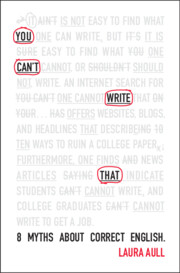369 results
12 - Sexuality in Post-war Liberal Democracies
-
-
- Book:
- The Cambridge World History of Sexualities
- Published online:
- 26 April 2024
- Print publication:
- 16 May 2024, pp 247-274
-
- Chapter
- Export citation
2 - A History of Misinformation
- from Part I - Setting the Stage
-
- Book:
- The Psychology of Misinformation
- Published online:
- 28 March 2024
- Print publication:
- 04 April 2024, pp 22-34
-
- Chapter
-
- You have access
- HTML
- Export citation
4 - The Control of Suicide Promotion over the Internet
-
- Book:
- Practical Ethics in Suicide
- Published online:
- 15 February 2024
- Print publication:
- 22 February 2024, pp 67-81
-
- Chapter
- Export citation
A Too Intimate Internet: What is Wrong with Precise Audience Selection?
-
- Article
-
- You have access
- Open access
- HTML
- Export citation
4 - The Public Forum
-
- Book:
- We Hold These Truths
- Published online:
- 30 November 2023
- Print publication:
- 21 December 2023, pp 98-135
-
- Chapter
- Export citation
10 - Inferring Irony Online
- from Part IV - Irony in Linguistic Communication
-
-
- Book:
- The Cambridge Handbook of Irony and Thought
- Published online:
- 20 December 2023
- Print publication:
- 07 December 2023, pp 160-180
-
- Chapter
- Export citation
Constitutional Liberties and Cyberspace: Analysing the Anuradha Bhasin v Union of India Case and its Impact on Fundamental Rights
-
- Journal:
- Legal Information Management / Volume 23 / Issue 4 / December 2023
- Published online by Cambridge University Press:
- 02 February 2024, pp. 276-281
- Print publication:
- December 2023
-
- Article
- Export citation
12 - Against Procedural Fetishism in the Automated State
- from Part III - Synergies and Safeguards
-
-
- Book:
- <i>Money, Power, and AI</i>
- Published online:
- 16 November 2023
- Print publication:
- 30 November 2023, pp 221-240
-
- Chapter
-
- You have access
- Open access
- HTML
- Export citation
Chapter Eight - Myth 8 You Can’t Write That Because Internet
-
- Book:
- You Can't Write That
- Published online:
- 09 November 2023
- Print publication:
- 23 November 2023, pp 145-160
-
- Chapter
-
- You have access
- Open access
- HTML
- Export citation
Brief scales for the measurement of target variables and processes of change in cognitive behaviour therapy for major depression, panic disorder and social anxiety disorder
-
- Journal:
- Behavioural and Cognitive Psychotherapy , First View
- Published online by Cambridge University Press:
- 21 November 2023, pp. 1-18
-
- Article
-
- You have access
- Open access
- HTML
- Export citation
Chapter 8 - Conspiracy Thinking
- from Part IV - Examining Societal Discontent
-
- Book:
- The Fair Process Effect
- Published online:
- 26 October 2023
- Print publication:
- 09 November 2023, pp 89-102
-
- Chapter
- Export citation

You Can't Write That
- 8 Myths About Correct English
-
- Published online:
- 09 November 2023
- Print publication:
- 23 November 2023
-
- Book
-
- You have access
- Open access
- Export citation
Chapter 14 - Online Outreach and Support Provision: An Empirically Informed Approach and Case Illustration
- from Section 3 - Social Media as a Resource
-
-
- Book:
- Social Media and Mental Health
- Published online:
- 11 October 2023
- Print publication:
- 12 October 2023, pp 139-149
-
- Chapter
- Export citation
Chapter 7 - Recruitment to QAnon
- from Part II - Recruiting and Maintaining Followers
-
-
- Book:
- The Social Science of QAnon
- Published online:
- 14 September 2023
- Print publication:
- 28 September 2023, pp 104-120
-
- Chapter
- Export citation
10 - Fascism in American Culture
- from Part IV - Countering Fascism in Culture and Policy
-
-
- Book:
- Fascism in America
- Published online:
- 14 September 2023
- Print publication:
- 14 September 2023, pp 313-351
-
- Chapter
- Export citation
A systematic survey of the online trade in elephant ivory in Singapore before and after a domestic trade ban
-
- Article
-
- You have access
- Open access
- HTML
- Export citation
As a new challenger approaches, how will modern psychiatry cope with ’shifting realities’?
-
- Journal:
- Acta Neuropsychiatrica / Volume 35 / Issue 6 / December 2023
- Published online by Cambridge University Press:
- 18 August 2023, pp. 377-379
-
- Article
-
- You have access
- HTML
- Export citation
3rd Palaeontological Virtual Congress: palaeontology in the virtual era
-
- Journal:
- Earth and Environmental Science Transactions of The Royal Society of Edinburgh / Volume 114 / Issue 1-2 / July 2023
- Published online by Cambridge University Press:
- 14 September 2023, pp. 1-4
- Print publication:
- July 2023
-
- Article
- Export citation
19 - Japanese Mass Media
- from Part III - Social Practices and Cultures in Modern Japan
-
-
- Book:
- The New Cambridge History of Japan
- Published online:
- 19 May 2023
- Print publication:
- 08 June 2023, pp 645-670
-
- Chapter
- Export citation
Dr. Google’s Advice on First Aid: Evaluation of the Search Engine’s Question-Answering System Responses to Queries Seeking Help in Health Emergencies
-
- Journal:
- Prehospital and Disaster Medicine / Volume 38 / Issue 3 / June 2023
- Published online by Cambridge University Press:
- 11 May 2023, pp. 345-351
- Print publication:
- June 2023
-
- Article
- Export citation



